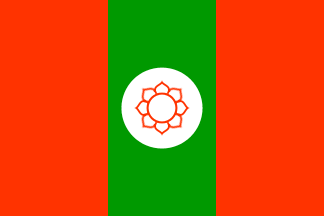 |
 |
 |
|
Madheshi separatism, SUKHDEV SHAH
Of all the people I am aware of existing around the world, Madheshis of Nepal are the least aggressive, least assertive, and—relevant to the present context—with the least revolutionary zeal. This kind of zeal, of course, is needed to usher in a regime change or, more decisively, create a different nation. It, then, is absurd that such a revolutionary group has emerged in Madhesh. The government is unsure of how to handle this menace which, actually, it is for the ethnic government in Nepal that has ruled Madhesh region more like a colony for as long as Nepal has been a State. The ethnic exclusion of Madheshis hasn’t changed a bit, whatever the appearance. Ethnic Madheshis remain alien in their own country, with scant representation in key government services. In most respects, there is no recognition outside the country that Nepal has a huge Madheshi ethnic group. In fact, Nepal government has made a conscious effort to keep this group out of sight and out of mind, minimizing their presence in areas that call for government representation. If there is a convincing case for an ethnic group to break away for a separate and independent state authority, Nepal’s Madheshi residents should unequivocally get such a distinction. The surprising and seemingly absurd reality of the situation, however, is that the supposed victims of government’s exclusionary policies—ethnic Madheshis—do not quite share the views of new revolutionaries. At least, there is no evidence of mass discontent among Madheshi people that they are being deprived of their civil and citizenship rights under the ethnic rule of the country that tends to exclude Madheshis or, at best, minimize their participation in the governmental affairs. As an evidence of Madheshi people’s acceptance of their current situation, we can look at the country’s governance which is anchored by a democratic majority, much like in India and other mature democracies of the West. In the national level elections—most recently in 2013—Madheshi parties have badly lost. In the latest election, Madheshi parties received just a quarter of total regional votes, in a convincing repudiation of Madheshi parties by their own people. Aside from peaceful resolution of conflict through democratic process, public discontent can be expressed in other ways, including taking up arms against a rogue regime and souring of inter-ethnic relations. Of this also there is little evidence. There have been no large-scale uprisings by Madheshi population except for short periods during 2006-07. But that enthusiasm for Madheshi assertiveness also fizzled out with the results of 2013 election. Madheshi people voted in the manner which shows they are happy with the status quo. CK Raut and his followers are latecomers to Madheshi politics. For sure, they have the correct idealism—of freeing Madheshi people from the yokes of ethnic colonialism. But, surprisingly, that idealism is not shared by Madhesh natives. In the background of massive betrayal by Madheshi leaders—who opted to divide Madhesh into fiefdoms and strongholds instead of fighting for Madheshi rights—Madheshi people feel safer aligning with their traditional protectors—ethnic Pahades. For the new revolutionaries it would be much wiser to win the battle for public trust of which there is a definite shortage. They must first tone down their rhetoric to a level that Madheshi people can understand, have reasons to align with, and can expect concrete results, not that they become blind followers of revolutionaries’ unsubstantiated claim of Heaven tomorrow! In the background of over two centuries of Pahade hegemony and over-lording of Madheshi territory, local people are resigned to the fact that their situation will never change. More surprisingly, Madheshi people have come to like it this way—to keep the things as they are—for they fear Madheshi control of their lives as worse than Pahade rule. For example, inter-caste and intra-regional divisions among Madheshis are more menacing than separation of Madheshis and Pahades. This kind of mutual mistrust among Madheshis gets reflected in voting patterns, which show Pahade candidates winning elections in overwhelmingly Madheshi territories. The challenge for CK Raut and his fellow revolutionaries is first to gain the trust of their people which, again, would have to be demonstrated by winning public mandate—peacefully and democratically. With the decline of Madhesh-based parties and their loss of face, there is an opportunity for new revolutionaries to drum up their agenda and get public approval for their revolutionary ideas. Their vision for change needn’t be for separation and independence which, for most Madheshis, is incomprehensible and far-fetched. This kind of fanaticism will more likely antagonize than unite them. Instead, their revolution should focus on securing citizenship rights for Madheshis, in a manner that gives Madheshi citizens a fifty-fifty share of everything that belongs to the State—national resources, jobs, opportunities, and a recognition that Nepal is a multi-ethnic, multi-cultural domain, not a mono-ethnic, mono-cultural State which the country’s ruling group has made it. Also, the government’s super-activism in dealing with this Madheshi menace must be toned down. Repression is going to strengthen the revolution, not weaken it. More people are going to be attracted to it, first as onlookers and then as participants. The arrest and jailing of revolution’s leader CK Raut some months ago, and, more recently, police disruption of a public meeting organized by Raut’s group in Kathmandu—which, allegedly, included rounding up Madheshi-looking people from streets of Kathmandu—are instances of wrong-headed approach to taming the revolution and undercutting its adherents. The smart way will be to ignore the new activists, for Madheshi people do not take them seriously and will not fall behind them. For one thing, these activists are untested commodity and have no credential to launch a revolution, on the pattern of Maoist insurgency. At the same time, Madheshi parties have enough strength to neutralize this new force and make it redundant, without government coming in between. sshah1983@hotmail.com - |
